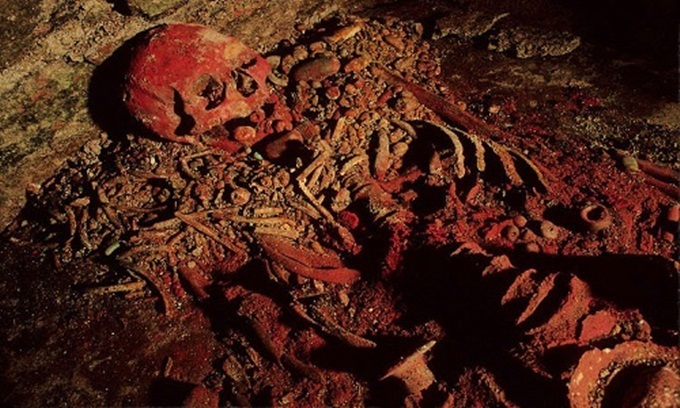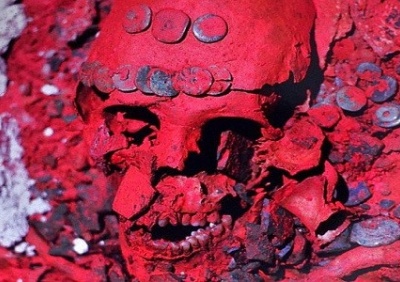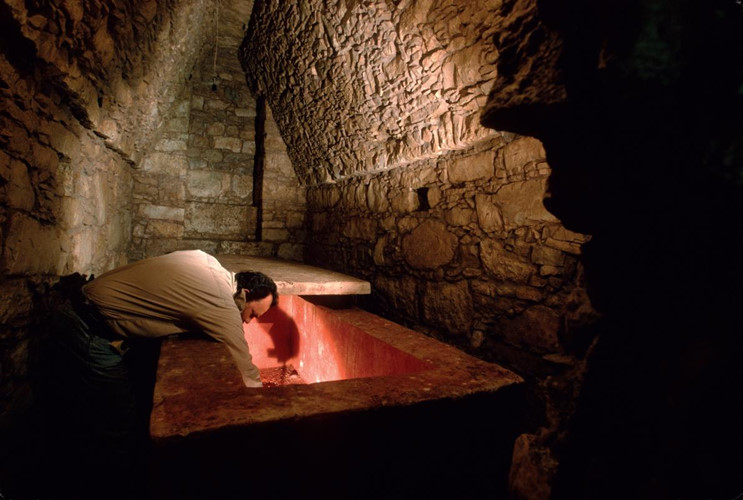Archaeology, a discipline that seeks to unravel the mysteries of the past, is often marked by captivating discoveries that transcend time. Among these enigmas stands “The Red Queen,” a compelling archaeological find that beckons us to delve into the mysteries across the ages. This article explores the captivating story of The Red Queen and other timeless archaeological puzzles that continue to challenge and intrigue researchers.

Nestled within the ancient Maya city of Palenque in Mexico, The Red Queen’s tomb emerged as a remarkable archaeological discovery. The royal burial site, dated to the 7th century, revealed a female adorned in vibrant red cinnabar, earning her the moniker “The Red Queen.” The mystery deepens as archaeologists grapple with questions about her identity, the circumstances of her death, and the symbolic significance of the vivid red pigment that envelops her.

The Red Queen’s tomb is intricately linked to the grandeur of Palenque’s temples and the dynasty of K’inich Janaab’ Pakal, a prominent Maya ruler. The interconnectedness of these archaeological wonders raises questions about the societal structures, religious practices, and political dynamics that characterized ancient Maya civilization. As researchers piece together the puzzle, The Red Queen’s tomb stands as a testament to the sophistication and mystery of this pre-Columbian culture.

Easter Island, a remote Pacific island, is adorned with colossal stone statues known as Moai. These monolithic figures, some weighing up to 80 tons, have sparked intense speculation about the methods used by the ancient Rapa Nui people to transport and erect these statues. The mysteries surrounding the logistics of moving these massive stone figures across the island persist, challenging archaeologists to uncover the engineering ingenuity of a civilization isolated in the vastness of the Pacific.

Stonehenge, the iconic prehistoric monument in England, continues to baffle researchers with its celestial alignment and colossal stone structures. The purpose behind its construction remains elusive, with theories ranging from astronomical observatory to ceremonial site. Archaeologists grapple with deciphering whether Stonehenge held a practical function or possessed cosmic significance tied to ancient beliefs and rituals, adding an additional layer to the enduring mystery surrounding this Neolithic marvel.
Etched across the arid landscape of the Peruvian desert, the Nazca Lines are colossal geoglyphs that form intricate patterns, shapes, and figures visible only from above. These enigmatic designs, created by the ancient Nazca people, raise questions about the purpose behind their construction and the methods employed in their precise execution. Archaeologists seek to unravel the cultural, religious, or astronomical significance embedded in these mysterious lines.
In the realm of digital exploration, the mysteries of The Red Queen, Easter Island’s Moai, Stonehenge, and the Nazca Lines garner widespread online interest. Effective Search Engine Optimization (SEO) strategies involve integrating keywords related to archaeological wonders, ancient mysteries, and enigmatic civilizations. By doing so, this article ensures visibility among audiences fascinated by the timeless allure of these archaeological puzzles.
As we navigate the labyrinth of history, The Red Queen and other archaeological mysteries beckon us to explore the depths of ancient civilizations and their enigmatic legacies. From Maya tombs to remote Pacific islands, these timeless puzzles challenge archaeologists to decipher the intricate stories woven into the fabric of the past. As we continue to unravel the mysteries across the ages, the allure of these archaeological marvels persists, inviting us to embark on a journey of discovery through the annals of time.

